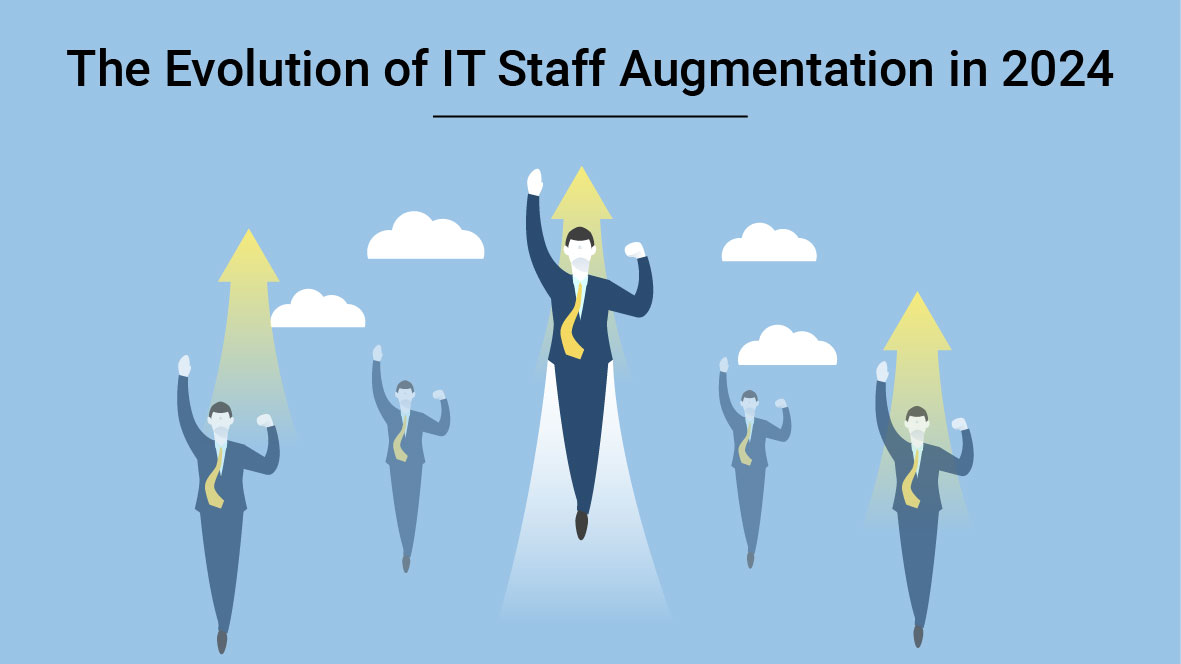The Evolution of IT Staff Augmentation in 2024: Trends and Predictions

The landscape of IT staff augmentation has undergone significant transformations, evolving from a simple outsourcing model to a sophisticated strategy integral to the scalability and flexibility of businesses worldwide. As we move through 2024, this evolution continues, propelled by technological advancements, changing workforce dynamics, and the ever-growing need for specialized skills. This blog delves into the current trends shaping IT staff augmentation, offers predictions for its future, and explores the impact on businesses striving for agile and efficient scaling.
The Transformation of IT Staff Augmentation
Historically, IT staff augmentation was primarily a means to fill short-term skill gaps or complete specific projects. However, as technology rapidly advanced and business needs became more complex, the model adapted. Today, it’s a strategic approach enabling businesses to access a global talent pool, embrace technological innovations, and maintain a competitive edge in their respective industries.
Current Trends in IT Staff Augmentation
1. Increased Demand for Specialized Skills:
As technologies such as AI, machine learning, and blockchain become more integral to business operations, the demand for specialized IT skills has skyrocketed. IT staff augmentation has become a key strategy for companies seeking to leverage these technologies without the long-term commitment of hiring full-time specialists.
2. Remote Work as a Standard:
The global shift towards remote work has expanded the possibilities for staff augmentation. Businesses are no longer limited by geographical constraints, enabling them to tap into talent from across the globe for the precise skills and expertise needed, regardless of location.
3. Strategic Partnerships with Augmentation Providers:
Companies are increasingly viewing IT staff augmentation providers not just as vendors but as strategic partners. This shift is leading to more collaborative relationships, where augmentation providers play a critical role in planning and executing long-term business strategies.
4. Focus on Team Integration and Culture Fit:
There’s a growing recognition of the importance of team integration and culture fit, even in temporary or augmented staffing models. Companies and providers alike are putting more emphasis on ensuring augmented staff align with the company’s culture and work well with existing teams.
Predictions for the Future of IT Staff Augmentation
1. Greater Emphasis on Flexibility and Scalability
Businesses will prioritize flexibility and scalability even more, driving the demand for IT staff augmentation services that can adapt rapidly to changing needs. This trend will likely lead to more fluid, project-based engagements, with companies scaling their augmented teams up or down with ease.
2. Evolution of Augmentation Technologies
Advancements in collaboration and project management technologies will further facilitate remote and augmented work. We may see the rise of platforms specifically designed to manage augmented teams, incorporating AI to match skills with project requirements more efficiently.
3. Increased Focus on Security and Compliance
As remote and augmented teams handle sensitive data across borders, security and compliance will become even more critical. There will be a greater emphasis on ensuring that augmented staff adhere to strict data protection standards, likely leading to the development of standardized security protocols for staff augmentation.
4. Integration of Augmented Reality and Virtual Workspaces
The use of augmented reality (AR) and virtual workspaces could redefine remote collaboration, making it more immersive and interactive. This technology could enable more effective integration of augmented teams, offering a closer approximation of in-person collaboration.
Impact on Businesses
The evolution of IT staff augmentation presents businesses with unprecedented opportunities to scale flexibly and efficiently. By leveraging global talent, embracing technological advancements, and fostering strategic partnerships, companies can stay ahead of the curve, adapt to market changes swiftly, and drive innovation. As we look to the future, it’s clear that IT staff augmentation will continue to be a critical component of business strategy, shaping the way organizations grow and compete in the digital age.







